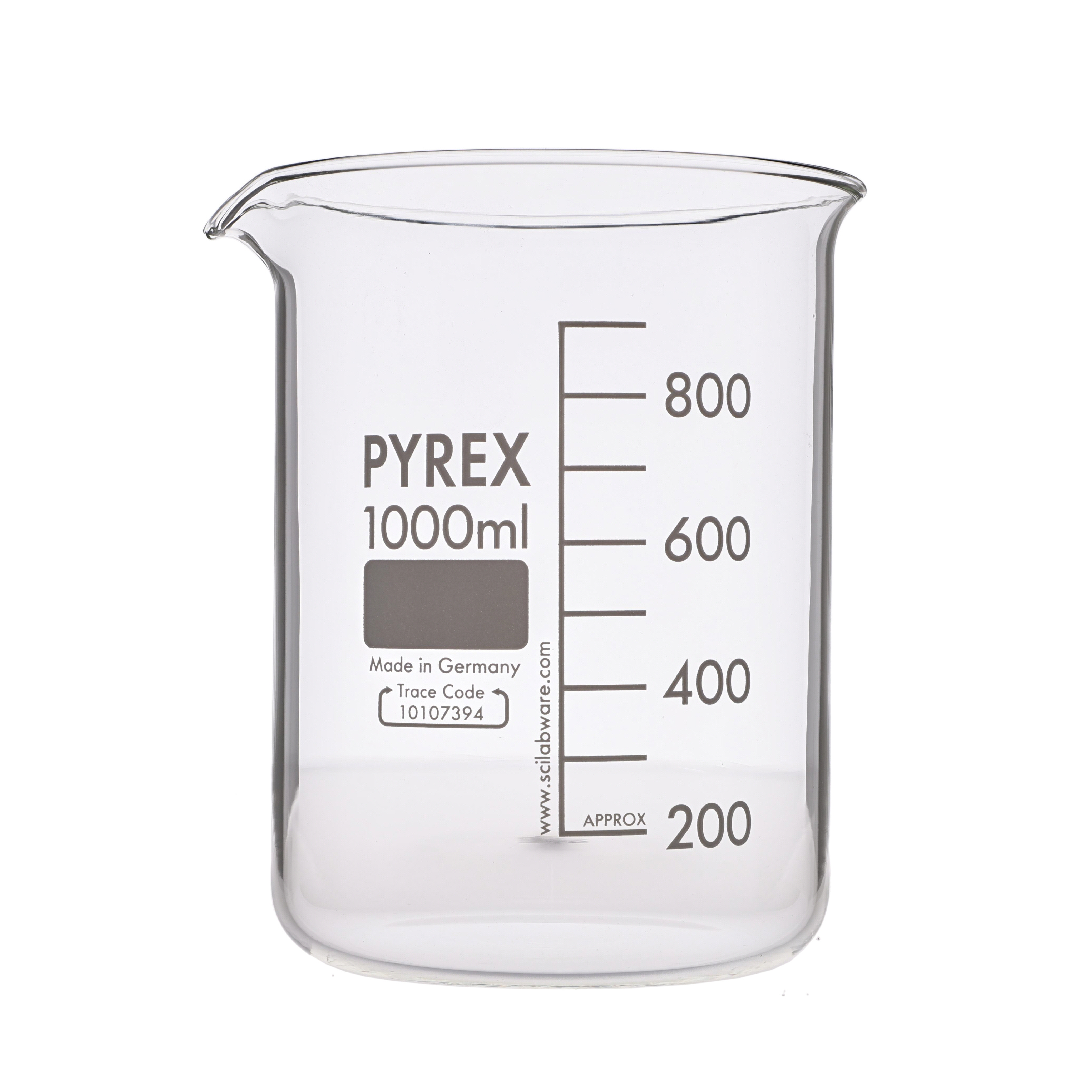Understanding Beakers in Science: Types, Uses, and Practical Guidance
Introduction to Beakers in Science
Beakers are among the most fundamental pieces of equipment found in any scientific laboratory. Designed for versatility and ease of use, beakers facilitate essential processes such as mixing, heating, and measuring liquids. Their simple, cylindrical shape and practical features have made them indispensable for scientific research, educational experiments, and industrial applications. This article provides an in-depth understanding of what a beaker is, explores its various types and uses, and offers practical advice for selecting and using beakers safely and effectively in laboratory environments.
What Is a Beaker?
A beaker is a cylindrical container, typically made of glass, plastic, or metal, with a flat bottom and a small spout (often referred to as a “beak”) to aid in pouring liquids without spilling. Most beakers have graduations marked on the side, which serve as an approximate guide to the volume of liquid inside, although they are not intended for highly precise measurements. Beakers are available in various sizes, ranging from a few milliliters to several liters, making them suitable for a wide range of scientific procedures [1] [4] .
Main Functions and Applications of Beakers
Beakers play a central role in laboratory work due to their versatility. Here are some of their primary functions:
- Mixing Solutions: Their wide mouth allows easy access for stirrers or rods, making them ideal for mixing chemicals or solutions.
- Heating Liquids: Glass beakers, especially those made from borosilicate glass, can withstand high temperatures and are commonly used for heating substances over Bunsen burners or hot plates [2] .
- Measuring Volumes: While not as precise as graduated cylinders, beakers provide rough volume estimates with their side markings.
- Holding and Storing Samples: Beakers can temporarily store liquids or solids during experiments or before further processing.
- Facilitating Reactions: Many chemical reactions are conducted within beakers due to their open shape and ease of access.
- Collecting Filtrates: Beakers are commonly used to collect filtered liquid in filtration setups [3] .
For example, in a chemistry classroom, students often use beakers to mix vinegar and baking soda to observe chemical reactions safely and conveniently.
Types of Beakers and Their Characteristics
Beakers are manufactured in several materials and designs to suit different scientific needs. The three most common types are:
Glass Beakers
Glass beakers, usually made from borosilicate glass, are valued for their heat resistance and transparency. This allows users to heat substances directly and monitor reactions visually. Glass beakers are reusable, easy to clean, and compatible with a wide range of chemicals, making them the standard choice for most laboratory applications [1] .
Example:
In microbiology labs, glass beakers are used to prepare nutrient broths and heat them to sterilize the contents.
Plastic Beakers
Plastic beakers, typically made from polypropylene or polycarbonate, are lighter and more affordable than glass. They are shatterproof and resistant to certain chemicals, making them ideal for educational environments or fieldwork where durability and safety are priorities. However, plastic beakers are not suitable for high-temperature applications [2] .
Example:
In high school biology labs, plastic beakers are often used for mixing solutions that do not require heating.
Metal Beakers
Metal beakers, often made from stainless steel, are used for specialized laboratory tasks involving high temperatures or corrosive substances. They are durable and corrosion-resistant but are less common in educational settings due to cost and weight [2] .
Example:
In industrial laboratories, metal beakers may be used to handle molten substances or strong acids in controlled environments.
How to Select the Right Beaker
Choosing the appropriate beaker for your laboratory work depends on several factors:

Source: glsed.co.uk
- Material Compatibility: For experiments requiring heating, glass or metal beakers are preferable. For tasks where breakage risk is high, plastic may be safer.
- Volume Requirements: Select a beaker size that comfortably accommodates the volume of liquid you need, allowing room to mix without spilling.
- Chemical Resistance: Ensure that the beaker material is compatible with the chemicals to be used; some plastics may react with strong solvents or acids.
- Measurement Precision: For precise measurements, use a graduated cylinder or volumetric flask instead of a beaker.
To access a variety of beaker options, you can search for “laboratory beaker suppliers” or visit established laboratory equipment providers. When ordering, review the specifications and safety data sheets provided by the manufacturer to ensure suitability for your intended use.
Proper Use and Safety Guidelines
Laboratory safety is a top priority when using beakers. Adhering to established protocols can prevent accidents and ensure reliable results:
- Always inspect beakers for cracks or damage before use, especially if they will be exposed to heat.
- When heating substances, use appropriate clamps or tongs and allow beakers to cool before handling.
- Never touch chemicals directly; use appropriate tools and wear protective equipment, such as gloves and goggles [3] .
- Clean beakers thoroughly after use to prevent cross-contamination between experiments.
- Do not attempt to use plastic beakers for heating unless the material is specifically rated for high temperatures.
- Report any accidents or spills to your supervisor or instructor immediately and follow laboratory emergency procedures.
In educational settings, teachers should supervise students at all times, provide clear instructions, and ensure that all safety rules are followed.

Source: clipart-library.com
Common Challenges and Solutions
While beakers are designed for ease of use, several challenges may arise:
- Inaccurate Measurements: Beaker graduations are approximate and not suitable for precise volumetric measurements. For accuracy, use a properly calibrated graduated cylinder.
- Breakage: Glass beakers can shatter if dropped or exposed to rapid temperature changes. Always handle with care and use plastic alternatives when safety is a concern.
- Chemical Compatibility: Some chemicals may degrade plastic or react with metal. Always verify compatibility before starting your experiment.
- Spills During Pouring: Use the beaker’s spout for controlled pouring and start with a slow, steady stream to minimize splashing.
When these issues arise, consult your laboratory manager or a materials safety data sheet (MSDS) for guidance on proper handling and alternatives.
Alternative Laboratory Vessels
While beakers are versatile, other laboratory glassware may be more appropriate for certain tasks:
- Flasks: Such as Erlenmeyer or volumetric flasks, are designed for mixing and storing liquids with reduced evaporation and spillage risk.
- Graduated Cylinders: Provide more accurate volume measurements than beakers.
- Test Tubes: Used for small-scale reactions and sample storage.
Select the vessel that best matches the specific requirements of your experiment for optimal results.
How to Access and Use Beakers in Your Laboratory
If you need beakers for your laboratory or classroom, follow these steps:
- Identify your requirements: Consider the volume, material, and quantity needed.
- Contact reputable laboratory supply companies. Search for “certified laboratory glassware suppliers” or check suppliers used by local schools and universities.
- Request safety and material compatibility information from the supplier to ensure the products meet your requirements.
- Train all laboratory users on proper handling, cleaning, and emergency procedures related to beaker use.
- Establish protocols for regular inspection and maintenance of beakers to ensure safety and longevity.
If you are in an educational institution, consult your science department or laboratory manager for approved purchasing channels and training resources. For independent researchers or hobbyists, local scientific supply stores and online retailers can provide a range of options.
Conclusion
Beakers are simple yet vital tools in scientific laboratories, facilitating a host of processes from mixing and heating to measuring and storing liquids. By understanding their types, applications, and safety protocols, you can ensure effective and safe laboratory operations. Always use beakers in accordance with laboratory guidelines, verify material compatibility, and choose the right vessel for each specific task. For additional information or to access laboratory beakers, consult certified suppliers or your institution’s laboratory coordinator for guidance.


